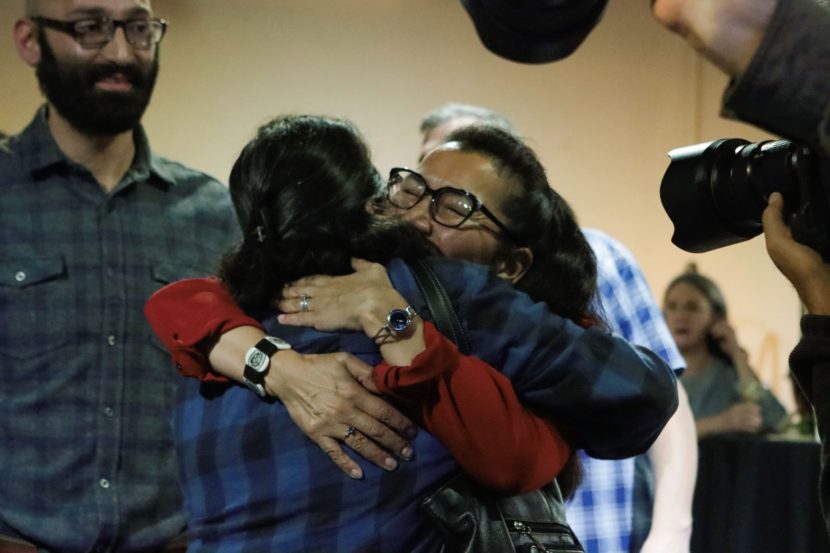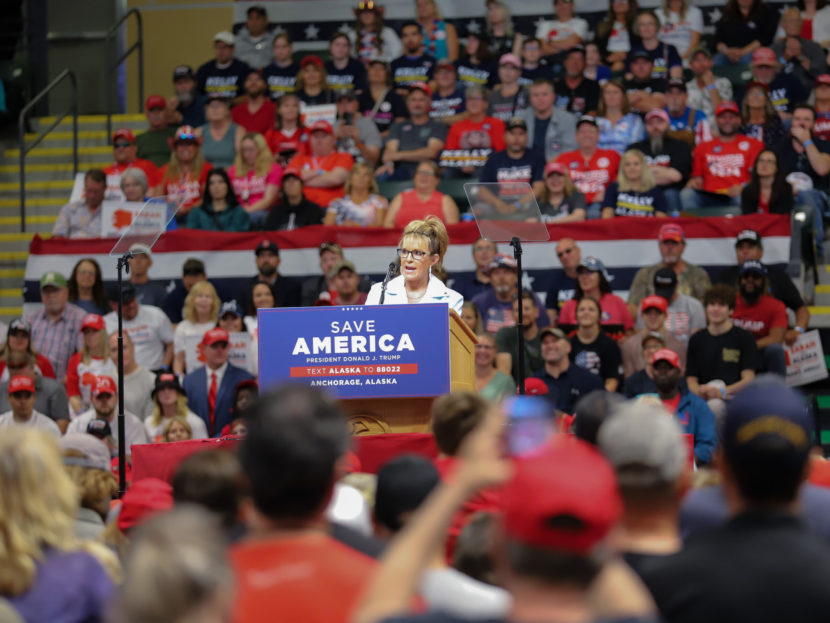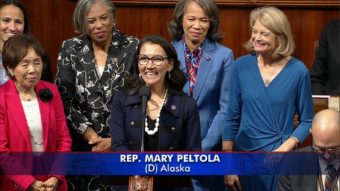
Updated — Aug. 18, 8:29 a.m.
Democrat Mary Peltola is leading in the special election for U.S House, with Sarah Palin ahead of fellow Republican Nick Begich.
As of Wednesday night, with about 80% of the votes counted, Peltola had 38% of first place votes, Palin had 32% and Begich had 29%.
Peltola was expected to finish ahead in this three-way race, with only first-choice votes counted on election night. The two Republicans are splitting the conservative vote. Palin’s second-place standing is perhaps more consequential. If that holds, Begich will be eliminated. If enough of his voters ranked Palin as a second-choice, Palin could overtake Peltola’s lead and win the seat.
The ultimate result of the special election won’t be clear until Aug. 31. That’s when the Division of Elections will determine who finished last and examine his or her ballots for second rankings.
Whoever wins the special election would be sworn in next month to serve the remainder of the late Congressman Don Young’s term, until January.
Meanwhile, the primary election for the next full House term was also held Tuesday, with 22 candidates on the ballot. With about half of the vote counted, the order was the same as in the special: Peltola was in the lead, but neck-and-neck with Palin, followed by Begich.

The top four vote-getters advance, and if the initial results hold, the fourth spot would go to Tara Sweeney, though she was still in single digits while the frontrunners had about 30% each.
Peltola, a salmon advocate from Bethel who served in the state House for a decade, urged her supporters to stay in it for the long haul.
“We’re all hopeful, of course, but you hate to jinx anything,” she said at an election watch party at 49th State Brewing, a pub in downtown Anchorage. “And so I am definitely going to be waiting for all the districts to come in and all the absentee ballots to come in patience.”
The Begich and Palin campaigns did not respond to messages requesting interviews.

In an emailed statement, Palin tore into ranked choice voting, the system voters adopted in a 2020 ballot initiative.
“Voters are confused and angry, and feel disenfranchised by this cockamamie system that makes it impossible to trust that your vote will even be counted the way you intended,” she said, without providing evidence that any ballots were counted in a way the voter didn’t intend.
Advocates of ranked choice voting say it better reflects the will of voters, in part because like-minded candidates won’t split the same pool of voters. Voters have the option of saying whom they’d pick if their favorite finishes last.
Badmouthing ranked choice voting is an unusual strategic choice for Palin, since the voting method is her most likely route to winning a seat in Congress.
Combined, the two Republicans in the race got more than 60% of the vote in the special. If even a modest portion of Begich’s voters ranked Palin as their No. 2, Palin would win.
This post has been updated with the latest numbers from the Division of Elections.



